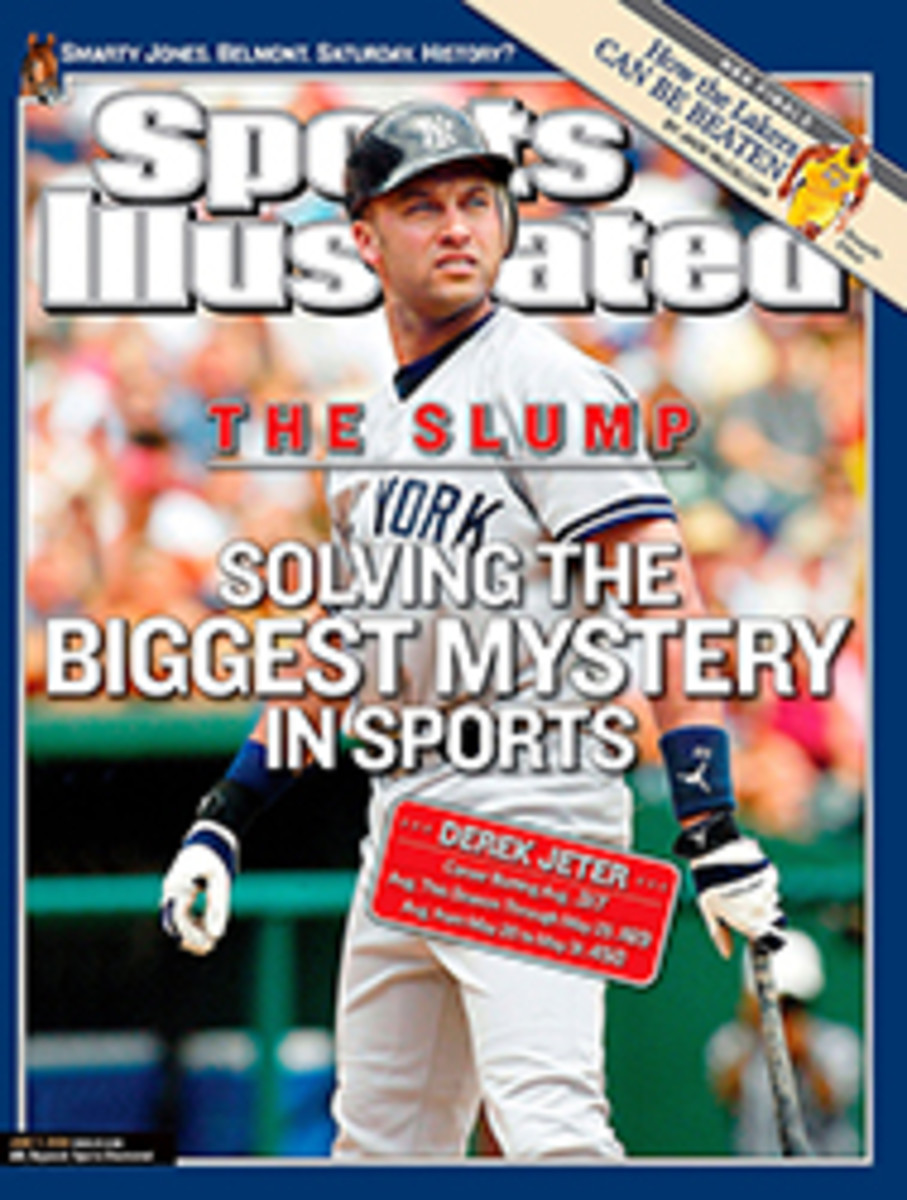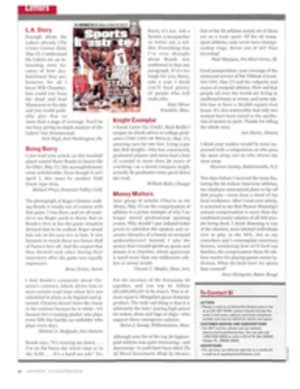
0utside, Looking Inward Sports coverage, these essays argue, tells us plenty about ourselves
BODY POLITIC
by David Shields
Simon & Schuster,
193 pages, $23
Writing about sports, David Shields implies, is a supplementary
exercise. That's because writing is a poor substitute for
doing--"the athletic aesthetic is always to assert that the
ecstasies experienced by the body are beyond the reach of words,"
Shields writes in the prologue to Body Politic--and because
sports stories not only recount events but also participate in a
process of mythmaking. While a newspaper's front section
describes events that the reader usually has not witnessed (a
fire downtown, a war overseas), the sports page recapitulates and
elaborates on the previous night's game for someone who, as often
as not, actually saw it.
So what does the sports story add? Shields, a professor of
English at Washington and the author of three books of
nonfiction, two novels and a short-story collection, attempts to
answer that question by critiquing sports-narrative forms, always
remaining attentive to the edifices--of race, religion,
nationality--they sustain. The 1999 NBA Finals between the New
York Knicks and the San Antonio Spurs, for example, "were really
about two (opposed, dichotomous, essentializing) ways of being a
black man in America. Gangsta. Good Negro." The Knicks were
ghetto caricatures symbolized by the comprehensively tattooed
Marcus Camby; by Larry Johnson, who had referred to himself as a
"rebellious slave"; and by Latrell Sprewell, infamous for having
choked Golden State Warriors coach P.J. Carlesimo. "'[The Knicks]
should all be in jail,'" Shields quotes a talk-radio caller.
"'The Spurs are classy gentlemen. The Knicks--they're all about
the ho's.'"
Shields finds a more subtle interplay of race and representation
in the "large, black, rectangular 'library-style' glasses"
Sprewell wore for a television interview during those Finals.
"Who had ever seen him wearing glasses before?" Shields writes,
speculating that Sprewell or his agent "surely ... conjured them
up to signify that Spree is not only a physical being but a
mental one as well." The question, Shields says, is "pure
subtext--How cerebral is this blessed/cursed black man?...
Sprewell's glasses go right to the mind/body split that is a
governing metaphor of racism."
This sort of observation illustrates Shields's attention to
minutiae and his ability to read iconoclastically. In a chapter
on the typology of sports movies, which "borrow the grammar of
resurrection and salvation," he infers Christocentrism from,
among other details, the names of protagonists Billy Chapel (For
Love of the Game), David Chappellet (Downhill Racer), Jesus
Shuttlesworth (He Got Game) and Jimmy Chitwood (Hoosiers). The
internationalization of the NBA, Shields notes, carries a
distinction between European players (cerebral and fundamentally
sound jump shooters) and Americans (raw, athletic dunkers);
globalization, he writes, has occasioned "a weird sort of parody
of the American Dream" in which "an American-born game has been
exported and is now being imported back to America, so that,
infused with 'European craft,' it can be reexported to the rest
of the world."
Though he writes from the cheap seats or the couch, not the
locker room, Shields elucidates superbly the paradox of sports
coverage: Although feats of the body seem to defy language,
sports is nonetheless "imprisoned by its prevailing rhetoric."
The ambition in these piercing essays is to discern the reality
behind the rhetoric.
COLOR PHOTO: SIMON & SCHUSTER (TOP)
COLOR PHOTO: MATTHEW STOCKMAN/GETTY IMAGES GLASS ACT Spree's specs: symbols of the mind-body split?

